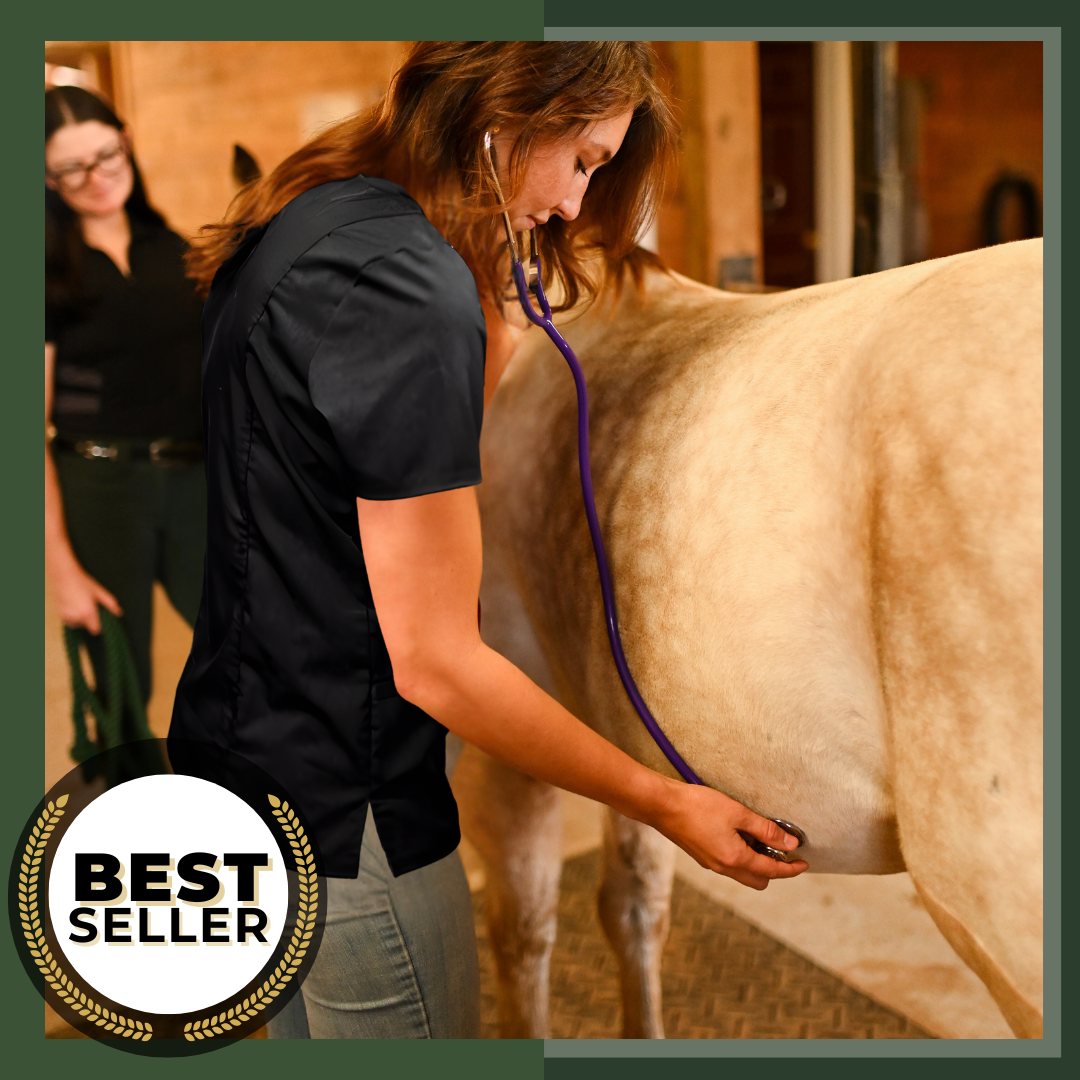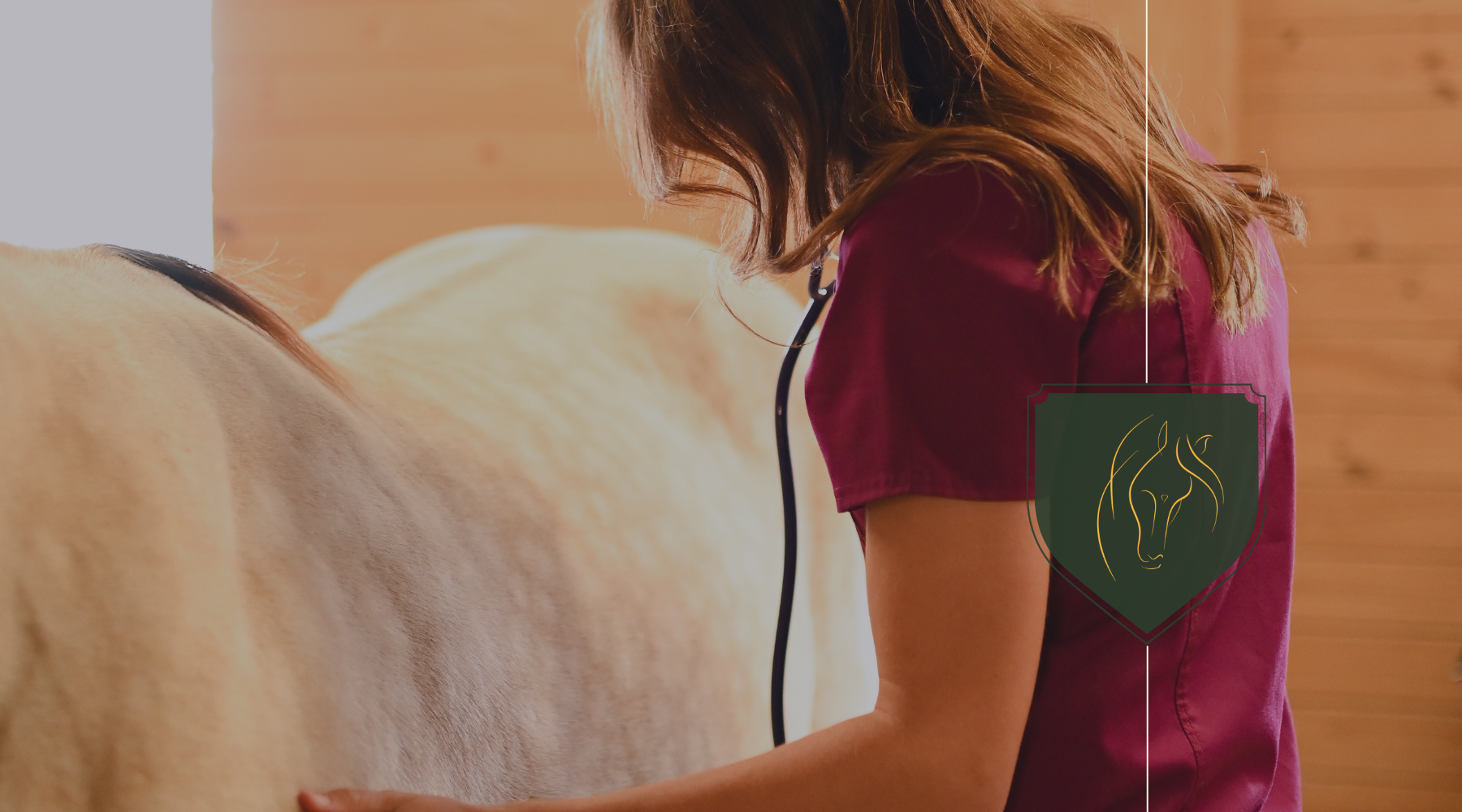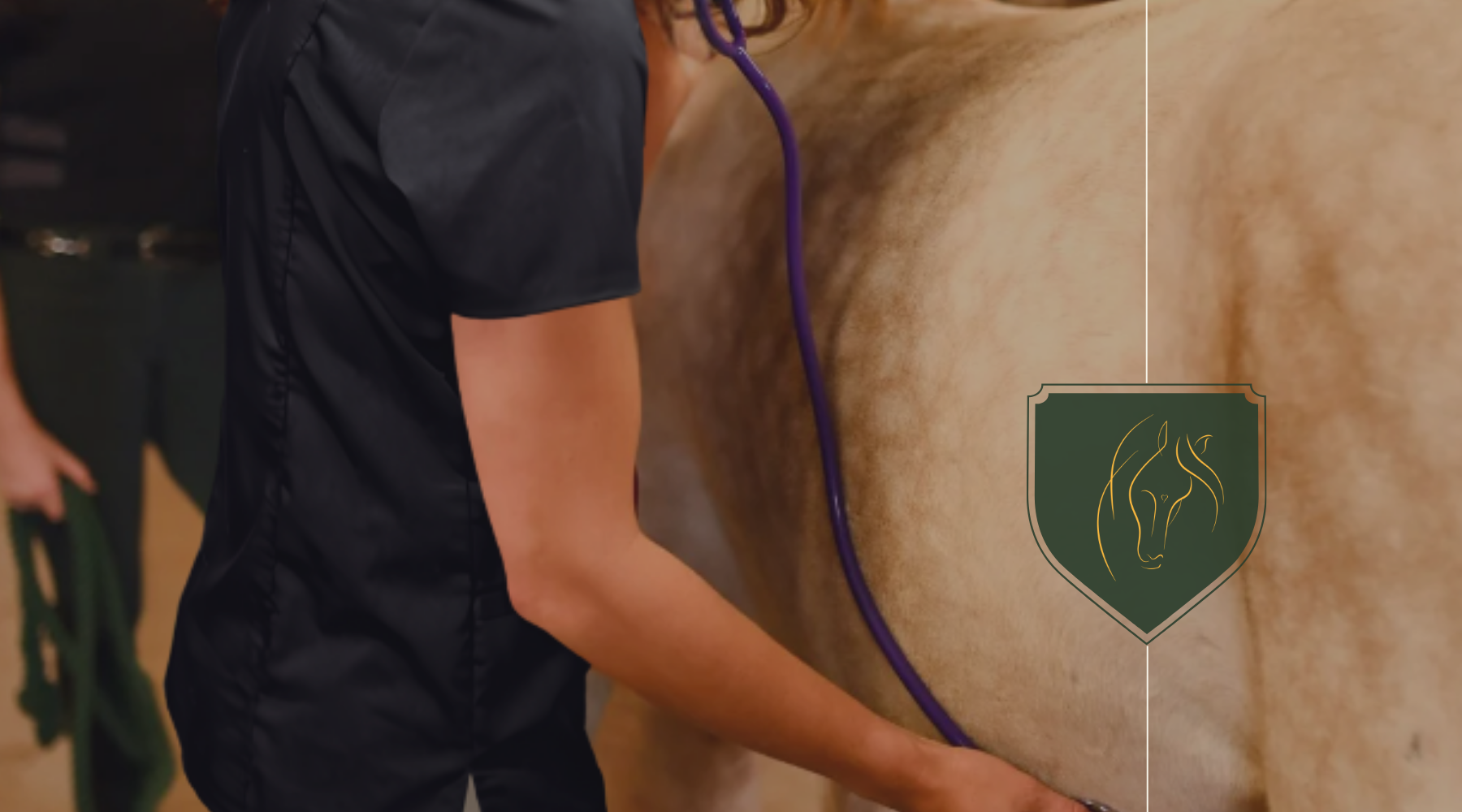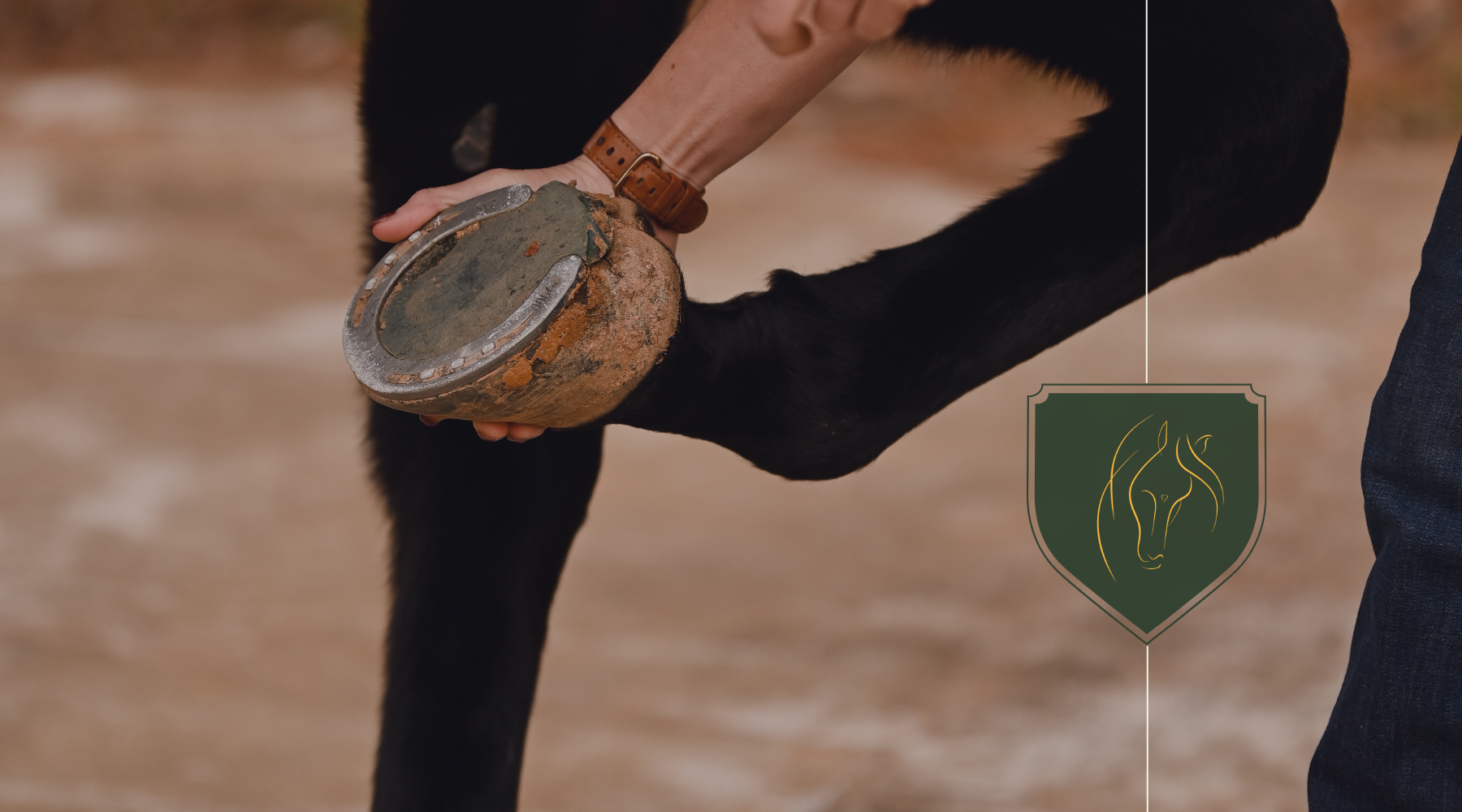As a seasoned equestrian, I've dealt with my fair share of horse-related emergencies. Knowing how to respond quickly and effectively can be the difference between a minor incident and a major crisis.
Whether you're a new horse owner or a veteran rider, you'll find essential tips and step-by-step instructions on how to tackle common equine injuries and ailments. From cuts and scrapes to colic and lameness, I'll walk you through the must-have supplies for your equine first aid kit and how to use them.
Stay with me as we dive into the world of equine health and safety. You'll learn how to keep your horse healthy and happy, and gain the confidence to handle emergencies with calm and care. Let's get started on this journey to becoming your horse's first line of defense when it comes to first aid.
Importance of Horse First Aid
As a dedicated horse owner, I've learned that knowing the basics of horse first aid is as crucial as providing daily care. Horses are athletic animals, and unexpected injuries or health issues can arise at any time. Being prepared to act swiftly and effectively can be the difference between a quick recovery and a possibly life-threatening situation. It's not just about having the skills; it's also about reducing the risk of further harm until professional help arrives.
Remember, horses can't tell us where it hurts—they rely on us to interpret their behavior and physical cues. That's why it's vital to recognize the signs of distress early. When you're well-versed in first aid, you'll spot subtle changes in behavior, such as refusal to eat or slight limping, which might indicate bigger health issues. Addressing these signs promptly can prevent more serious conditions from developing.
It's equally important to be familiar with your horse’s normal vital signs, like heart rate, temperature, and respiration. Monitoring these can alert you to potential health problems before they escalate, enabling you to provide the necessary first aid care.
In addition to accurate assessment, knowing how to perform simple yet effective techniques, like cleaning a wound or wrapping a sprain, is invaluable. These actions, done correctly, can enhance your horse's chances for a full recovery. Moreover, understanding when to apply cold therapy compared to heat therapy, or how to properly move a horse with a suspected fracture, could spare your horse from additional pain or injury.
Educating yourself on horse first aid isn't just about responding to emergencies—it's about nurturing a safer environment. With a proactive attitude and a well-stocked first aid kit, you're ensuring that you're ready for any situation that might arise. Whether you're out on the trail, in the stable, or at a competition, you’ll have peace of mind knowing that you're equipped to protect and care for your horse in times of need.
Building Your Equine First Aid Kit
When it comes to caring for horses, preparedness is key. Building a comprehensive equine first aid kit is one of the most critical steps I can take to ensure the health and safety of my horse. The right supplies on hand can make a significant difference when dealing with an emergency until professional veterinary care is available.
I'll start by stocking up on the essentials:
-
Digital thermometer to monitor my horse's temperature
-
Stethoscope to check heart and respiratory rates
-
Sterile gauze pads and vet wrap for wound management
-
Antiseptic solution like povidone-iodine for cleaning wounds
-
Non-stick wound pads to protect open injuries
-
Saline solution for eye irrigation or cleaning out wounds
-
Hoof pick to clear debris and maintain hoof health
-
Surgical scissors with a blunt end for cutting bandages without injuring the horse
-
Twitch as a restraint tool when necessary
My kit includes not only tools and supplies but also contact information for my veterinarian and a nearby equine hospital. It's crucial for me to have these numbers readily accessible during an emergency.
For cases like sprains or inflammation, I make sure to have cold packs, or a compression ice wrap available. These can reduce swelling and provide temporary relief until a full assessment by a vet.
I always remember to check my first aid kit periodically for expired products and replenish used items to maintain its readiness. It's not just about having the right items, but ensuring they're fit for use when needed most.
In managing equine injuries, time is often of the essence. A well-equipped first aid kit isn't just about preparation; it's a crucial element of swift and effective response in times of need. With these items at hand, I'm better positioned to tackle emergency situations with confidence, knowing I've got the necessary tools to provide preliminary care to my horse.
Essential Supplies for Horse First Aid
When dealing with horse emergencies, having the right tools can make all the difference. My experience has taught me that a well-stocked first aid kit isn’t just a convenience—it's a necessity. Let's dive into the essentials that should be in every horse owner's first aid arsenal.
First and foremost, you'll need a digital thermometer to accurately assess your horse's temperature. Since a horse's normal temperature range is 99.5-101.3°F, anything above or below can indicate a health concern. A tool I’ve often relied on is a stethoscope; it's invaluable for listening to heart and gut sounds, especially if there’s a suspicion of colic.
For wound care, stock your kit with these must-haves:
-
Gauze pads and rolls for dressing wounds
-
Self-adhesive bandages that provide support without sticking to the fur
-
Antiseptic solution or wipes to clean and disinfect wounds
-
Saline solution for flushing out debris from the eyes or wounds
-
Sterile non-stick pads for larger wound coverage
In addition to these items, I always keep a supply of clean towels and a pair of scissors designed for cutting bandages.
For dealing with sprains or strains, cold therapy packs or a reusable ice wrap can be crucial for reducing swelling and inflammation. Equally important is having a hoof pick to remove debris that could cause or aggravate injuries.
Lastly, for hoof and nail injuries, you'll need a hoof boot to protect the horse's foot after treating the injury. I’ve found that a quality hoof boot is an indispensable part of any first aid kit because it allows a horse to move without causing further damage.
Remember to routinely check your supplies, especially ointments and medications, to ensure they haven’t expired or depleted. It’s vital that your first aid kit is ready to use at a moment’s notice. By being prepared, you can tackle any equine emergency with confidence, knowing you have the tools required to provide immediate and effective care.
Assessing and Stabilizing Common Injuries
When a horse sustains an injury, rapid assessment and stabilization are key to preventing further harm. It's critical for me to remain calm as horses can pick up on my anxiety, potentially worsening the situation. The first step is to assess the injury's severity and determine the most appropriate action. I always start by checking vital signs, including temperature, pulse, and respiration, comparing them to the horse's normal values.
Lacerations are a common concern. I know I must act quickly to minimize blood loss and prevent infection. Applying direct pressure with a clean gauze pad helps control bleeding, and gently cleaning the wound with an antiseptic solution reduces the risk of infection. For deep cuts, I avoid applying ointment as it may interfere with subsequent veterinary treatment.
In case of sprains or signs of lameness, I minimize movement to prevent additional strain. If there's swelling, cold therapy can be incredibly effective. I use a cold compress or ice pack, wrapped in a towel to avoid direct skin contact, applying it for 20 minutes and giving equal time off to prevent tissue damage.
Hoof issues such as puncture wounds require special attention. I carefully remove any debris and clean the area, while being prepared to support the horse's weight if it's reluctant to bear down on the injured hoof. It's important to monitor the injury closely and ensure that there's no sign of infection such as increased heat or a foul smell.
Every injury can be unique, and it's vital to have a vet on call for serious injuries or when in doubt. My role in these situations is to stabilize and prepare the horse for the professional care it needs. Regular training and practice in first aid procedures ensure I'm always ready to take the right steps to keep my horse safe and healthy.
Treating Cuts, Scrapes, and Wounds
When dealing with cuts, scrapes, and wounds on horses, timely and effective treatment is crucial to prevent infection and ensure proper healing. My approach always begins with a thorough assessment of the injury. If the cut is superficial, I'll clean the area with a gentle but effective antiseptic solution.
For more serious wounds, my immediate concern is to stop the bleeding. I apply direct pressure using a clean cloth or sterile gauze. The key is to be firm yet gentle to minimize additional trauma to the tissue.
Next, I meticulously clean the wound, removing dirt and debris. It's important to flush the injury with saline solution to reduce the risk of infection. When dealing with puncture wounds or those contaminated with foreign material, I recommend calling the vet immediately, as they may require professional care and possibly a tetanus booster.
I always ensure that my first aid kit contains:
-
Antiseptic wound cleaner
-
Sterile saline solution
-
Non-stick gauze
-
Self-adhesive bandages
-
Vet wrap
Once the wound is clean, dressing it properly is crucial. I use non-stick gauze to cover the area and secure it with vet wrap. It's vital to wrap the affected area snugly but not too tight as to cut off circulation.
Monitoring the wound over the following days is one of the most important steps. Infection can set in quickly, and symptoms like swelling, heat, and oozing warrant immediate veterinary attention. Regularly changing the bandages and reapplying antiseptic solutions can promote healing and prevent further complications.
For minor wounds, healing times can vary, but most will show signs of improvement within a few days. I keep a watchful eye on the horse's behavior and look for any changes in appetite or demeanor, which could indicate that the wound is bothering them more than it should.
While it's essential to have a first aid kit ready and know these care techniques, there's no substitute for professional veterinary care when situations are beyond basic first aid. Always having a veterinarian's contact information at hand means I'm prepared to take the necessary steps should the wound require more advanced treatment.
Dealing with Equine Colic
One of the most distressing conditions that can affect horses is colic, which refers to abdominal pain that can arise from various gastrointestinal issues. Recognizing colic is crucial – signs include pacing, sweating, looking at the flank, lying down more than usual, rolling, and loss of appetite. Remember, early detection can make all the difference.
Upon suspecting colic, immediate steps should be taken to assess the severity. Start by removing all food to prevent further gut overload and check for signs of dehydration or shock. These can include a dry mouth, sunken eyes, and a rapid heart rate. Monitoring vital signs is essential and can provide critical information to veterinarians.
Do not administer any medication without consulting a vet, as this could complicate the diagnosis. Instead, encourage your horse to walk gently if it's safe and comfortable to do so. Walking can stimulate gut movement and prevent rolling, which could cause a deadly twist in the intestines.
A vital component of managing equine colic is a robust emergency protocol. This should consist of:
-
Having the veterinarian's number on hand
-
Familiarity with the fastest route to an equine hospital
-
An updated medical history of the horse
When your veterinarian arrives, they'll perform a thorough examination, which may include listening to the gut sounds, a rectal exam, and possibly nasogastric tubing to relieve gas and fluid buildup. Based on their findings, they'll suggest further treatment which might be medicinal, surgical, or dietary changes.
It's pertinent to keep a record of the colic episode, including its duration, symptoms, and any actions taken. This information is invaluable for future reference and can help tailor a preventative care strategy to reduce the risk of recurrence. Regular deworming, proper feeding practices, and routine dental care are integral parts of colic prevention. Keep in mind, while dealing with equine colic can be daunting, staying informed and prepared is your best defense.
Managing Lameness in Horses
When it comes to horse care, lameness is a prevalent issue that requires immediate attention. Identifying the cause of lameness is crucial. As an experienced horse owner, I've learned that this often involves observing the horse's gait, looking for swelling or heat in the legs, and feeling for any irregularities in the tendons or joints.
Immediate actions when lameness is suspected include:
-
Rest: Keep the horse still to prevent further injury.
-
Cold Therapy: Apply ice or cold packs to reduce inflammation if the lameness is acute and involves swelling.
-
Hoof Care: Check the hooves for any objects, bruises, or abnormalities.
It's essential to have a vet examine the horse as they can offer a more accurate diagnosis. They might suggest diagnostic techniques such as radiography or ultrasonography depending on the suspected cause of lameness.
Preventive care plays a significant role in managing lameness. This includes:
-
Regular hoof trims and balances.
-
Appropriate exercise and conditioning programs.
-
Ensuring a nutritionally balanced diet with necessary supplements.
Remember, not all lameness is the result of injury; some may be due to congenital conditions or wear and tear on the horse’s joints. Therefore, tailored management plans for every horse are an absolute necessity.
Monitoring and recording any episodes of lameness can aid in quick recognition of patterns or repeat issues which might indicate a deeper underlying problem. By keeping these records, I'm able to make informed decisions about my horse's health and any adjustments needed in their care regime.
Restoration of mobility and alleviation of pain are always the primary goals when addressing lameness. Dialogues with equine specialists, consistent observation, and adherence to a sound health maintenance program are the keystones to a rapid and successful recovery for any horse facing lameness.
Emergency Care for Fractures and Sprains
When dealing with fractures and sprains, time is of the essence. My first piece of advice is to keep the horse calm as you assess the situation. Signs of these injuries include swelling, inability to bear weight, or visible deformity. If you suspect a fracture, it's crucial to prevent the horse from moving to avoid further injury.
For sprains, cold therapy can reduce swelling and ease discomfort. I always recommend having an instant cold pack or a hose available to cool the affected area immediately. Keep in mind, though, sprains warrant a vet check to rule out more serious injuries. Compression with a bandage may also support the area, but be careful not to cut off circulation.
In the case of a suspected fracture, my strategy involves two key actions:
-
Immobilization: Use a splint if you can do so without causing the horse distress. Splinting materials should be soft yet sturdy, like thick magazines or padded wood planks.
-
Control movements: If it's safe, lead the horse gently to a flat, confined space or wait for a vet to arrive if any movement seems unsafe. I always use a trailer for transport, ensuring it's well-padded for the journey.
Administering pain relief can be tempting, but I generally avoid it before a vet's assessment; masking pain might lead to a misdiagnosis. Instead, focus on providing reassurance and preventing aggravation of the injury.
Regular observation plays a critical role in the immediate aftermath of an injury. Keep a close eye on the horse for any changes in swelling, pain level, or attitude. Your keen observation will be invaluable to the vet upon arrival, which can significantly influence the horse's prognosis.
While it's important for horse owners to know how to respond to fractures and sprains, remember that these injuries require professional attention. Having your vet's number readily available, along with your prepared first aid kit, can make all the difference in managing these traumatic situations effectively.
Recognizing and Responding to Signs of Illness
When tending to horses, being vigilant about their health is as crucial as addressing injuries. I've found that early detection of illness can mean the difference between a minor issue and a serious health crisis. Signs of illness in horses may include loss of appetite, lethargy, fever, coughing, or nasal discharge. Changes in behavior such as aggressiveness or isolation could also signal that something's amiss.
Upon noticing any unusual symptoms, I always take immediate steps to assess the horse's condition. This could involve taking their temperature, checking their heart rate, and examining their physical state for any abnormalities. It's essential to have a first-aid kit handy which should include a thermometer, stethoscope, and other diagnostic tools to help in these situations.
-
Temperature: A normal range for a horse is 99-101°F.
-
Heart rate: A typical resting heart rate is 28-44 beats per minute.
-
Respiratory rate: The average is 12-20 breaths per minute.
Any deviation from these norms might suggest the horse is unwell, and I'd consider further investigation. If I'm concerned, my next step is to isolate the horse to prevent potential spread of disease and to make the environment as comfortable as possible.
Managing the diet during illness is paramount. Horses with a decreased appetite might still accept softer foods or warm mashes which are easier to consume and digest. Ensuring that they have access to clean, fresh water is also non-negotiable, as dehydration can exacerbate health issues.
For respiratory issues, I ensure the stable has adequate ventilation to aid in the horse's recovery. A dust-free environment helps prevent further irritation of the respiratory tract. If I suspect an infectious disease, I'll wear protective clothing and disinfect my equipment to avoid cross-contamination.
In all cases, I'll contact my veterinarian for advice. They might suggest specific treatments or recommend that they examine the horse in person. It's always better to err on the side of caution, especially when dealing with potential illness. Regular observation and swift action are key components of equine care – part of my responsibility as a horse owner is never to take signs of illness lightly.
Preventing and Managing Equine Infections
Infections can be a serious threat to horses' health. Early detection and management are critical. I keep a close eye on my horses for any signs of infection, like swelling, heat, pus, or an unexplainable elevation in temperature.
Preventing infections starts with basic hygiene. Cleaning and disinfecting stalls, ensuring fresh bedding, and washing my hands between handling different horses help reduce the spread of pathogens. I recommend the use of antiseptic solutions and ointments on any open wounds, which serve as potential entry points for bacteria.
Vaccinations are another cornerstone of infection prevention. I stay up-to-date with my horse’s vaccinations to protect against common diseases such as Tetanus and Equine Influenza. These vaccines are vital as they prepare the horse's immune system to fend off infections before they take hold.
When managing an active infection, I don't hesitate to contact my veterinarian for the best course of action. Mild infections might be treatable with antibiotics and topical treatments, but more serious conditions could require more aggressive intervention.
-
Keep Wounds Clean: I clean any wounds promptly to prevent bacterial growth.
-
Monitor Vital Signs: Regularly checking my horse’s temperature helps me catch fevers that could indicate an infection.
-
Isolate Sick Horses: To prevent infection spreading, isolating any horse that shows signs of illness is crucial.
Nutritional support plays a role in infection management as well. Horses with a balanced diet have stronger immune systems, making them less susceptible to infections. I include a mix of forage, grains, and supplements to ensure my horses receive all necessary nutrients and maintain robust health.
Regular veterinary check-ups can catch infections before they become serious. During these visits, vets can also give tailored advice on infection prevention tailored to my local environment and the specific needs of my horse.
In addressing horse first aid, recognizing the potentially devastating impact of infections is paramount. Through diligent observation and a proactive approach, these issues can be effectively managed, ensuring the wellbeing of my equine companions.
Conclusion
Taking care of our equine companions requires knowledge, vigilance, and a proactive approach. I've shared essential tips on handling common horse injuries, managing illnesses, and preventing infections. Remember, recognizing early signs and providing timely first aid can make a significant difference in your horse's health. Always have a well-stocked first-aid kit, keep up with regular vet check-ups, and don't hesitate to seek professional advice when needed. By staying informed and prepared, you'll ensure your horse remains healthy, happy, and ready for whatever adventures lie ahead.
What are some common horse injuries that require first aid?
Some common horse injuries that require first aid include cuts, scrapes, wounds, colic, lameness, fractures, sprains, and signs of illness.
How can I treat cuts, scrapes, and wounds on my horse?
For cuts, scrapes, and wounds on your horse, it is important to clean the area with antiseptic solution, apply a suitable wound dressing, and monitor for signs of infection. Seek veterinary attention if necessary.
What should I do if my horse shows signs of colic?
If your horse shows signs of colic, such as restlessness, rolling, or repeatedly looking at its flank, it is crucial to contact a veterinarian immediately for an assessment. Follow their instructions and withhold food until the vet arrives.
How can I manage lameness in my horse?
To manage lameness in your horse, identify the cause and take appropriate actions such as rest, cold therapy, and proper hoof care. Seeking veterinary advice is crucial, as they may recommend further treatment or diagnostic procedures.
What should I do in case of a fracture or sprain?
In cases of fracture or sprain, immediately assess the situation and keep the horse calm. For sprains, use cold therapy and restrict their movement. For fractures, immobilize with splints and seek veterinary attention. Regular observation and seeking professional advice is essential.
How can I recognize signs of illness in my horse?
To recognize signs of illness in your horse, be vigilant and monitor their health regularly. Look for symptoms like loss of appetite, lethargy, abnormal breathing, or diarrhea. Using a first-aid kit with diagnostic tools can aid in assessment. Contact a veterinarian for guidance and possible examination.
How can I prevent and manage equine infections?
Preventing and managing equine infections require early detection and management. Practice basic hygiene, clean wounds with antiseptic solutions or ointments, and follow vaccination schedules. Keep wounds clean, monitor vital signs, isolate sick horses, and provide proper nutrition. Regular veterinary check-ups are essential for tailored advice and early infection detection.
What is the overall approach to effectively manage horse health and wellbeing?
To effectively manage horse health and wellbeing, maintain diligent observation, and take a proactive approach. Regularly monitor their health, promptly address injuries and illnesses, and seek professional veterinary assistance when needed. Practice preventive care measures such as regular hoof trims, appropriate exercise, and a balanced diet. Prioritize hygiene and infection prevention, and follow vaccination schedules. Be proactive in managing their overall wellness.






Leave a comment
This site is protected by hCaptcha and the hCaptcha Privacy Policy and Terms of Service apply.